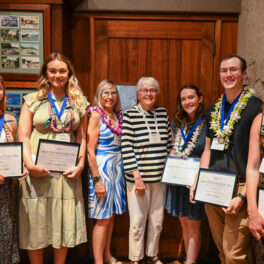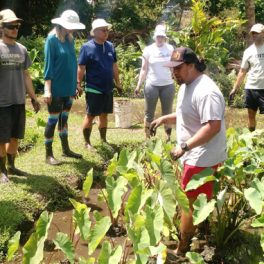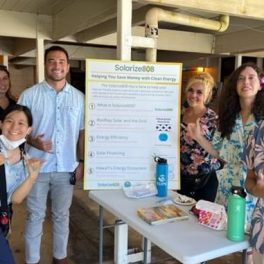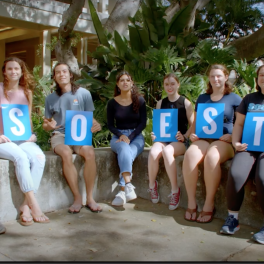A new book Ignite: A Decolonial Approach to Higher Education Through Space, Place and Culture looks closely at the role of colonization on the culture and values of higher education institutions. The book includes a chapter by faculty from the University of Hawaiʻi Sea Grant College Program (Hawaiʻi Sea Grant), UH Mānoa’s School of Ocean and Earth Science and Technology and Center for Teaching Excellence and Kuaʻāina Ulu ʻAuamo.
The chapter “Kūlana Noiʻi: a Kanaka ʻŌiwi-centered Indigenist axiology for conducting research with communities,” examines the nuances and complexities of community-researcher partnerships and details the process used to develop written guidelines (Kūlana Noiʻi) that help ensure reciprocal, place-based research in Hawaiʻi. It stresses the importance of Indigenist ethics, which require that all who engage with Kūlana Noiʻi take the rights of Indigenous peoples as the highest priority.
The authors of the chapter, Rosie ʻAnolani Alegado and Katy Hintzen from Hawaiʻi Sea Grant’s Ulana ʻIke Center of Excellence; Brenda Asuncion and Miwa Tamanaha from Kuaʻāina Ulu ʻAuamo; and Daniela Bottjer-Wilson from the UH Mānoa Center for Teaching Excellence, initially envisioned Kūlana Noiʻi out of a need expressed in the ahupuaʻa (traditional land division extending from the mountain to the sea) of Heʻeia for a set of guidelines to help ensure that research projects in this area engage in equitable and reciprocal partnerships.
“Kūlana Noiʻi is rooted in the collective knowledge, insight and many years of effort contributed by communities, organizations and experts across Hawaiʻi,” said Alegado. “We co-developed as Kūlana Noiʻi is a starting point for deeper conversations between researchers and community partners that when applied along with hard work, may lead to more just and generative relationships.”
Community-based ethical research training
Since Kūlana Noiʻi was first released, more than 600 researchers, community members and resource stewards have been trained through more than 40 workshops on building and nurturing pilina (relationships) and Aʻo aku, aʻo mai / Aloha aku, aloha mai (knowledge given, knowledge received / Love given, love received). A series of workshops with the UH Center for Teaching Excellence is described in the book chapter as exemplary learning moments—faculty from close to 40 diverse departments requested regular, community-based ethical research training as part of their professional development.
While the Kūlana Noiʻi is a uniquely Hawaiian perspective, it is also relevant to challenges faced by research institutions, conservation managers and community stakeholders. Kūlana Noiʻi trainings on the continental U.S. have demonstrated that a common need in community-based research is understanding the significance of place in shaping individual identities and community connections in different regions, as well as involving the people that care for place in the decision-making process.
Ignite: A Decolonial Approach to Higher Education Through Space, Place and Culture is available in hardback or e-book through Vernon Press and other booksellers.
Read also on UH News.














